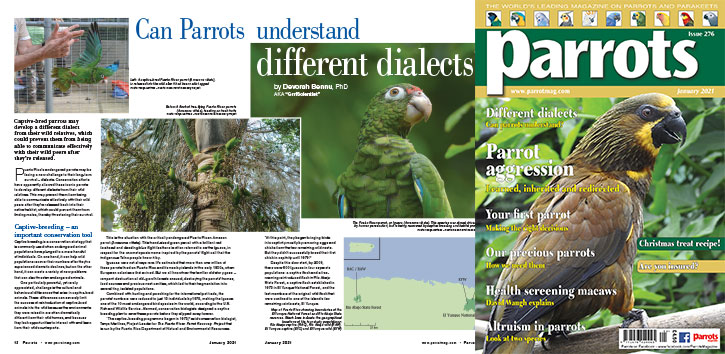
By Devorah Bennu, PhD, AKA “GrrlScientist”
Captive-bred parrots may develop a different dialect from their wild relatives, which could prevent them from being able to communicate effectively with their wild peers after they’re released.
Puerto Rico’s endangered parrots may be facing a new challenge to their long-term survival – dialects. Conservation efforts have apparently allowed these iconic parrots to develop different dialects from their wild relatives. This may prevent them from being able to communicate effectively with their wild peers after they’re released back into their native habitat, which could prevent them from finding mates, thereby threatening their survival.
Captive breeding is a conservation strategy that is commonly used when endangered animal populations have plunged to a mere handful of individuals. On one hand, it can help wild populations recover their numbers after they’ve experienced dramatic declines, but on the other hand, it can create a variety of new problems that can also threaten endangered animals.

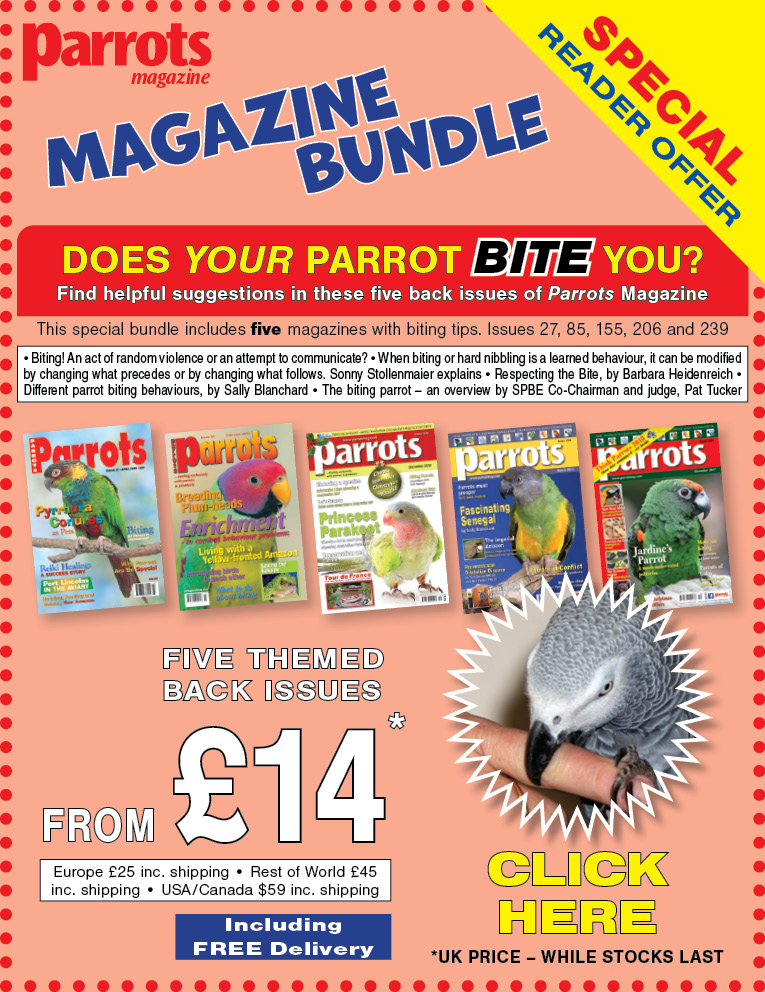
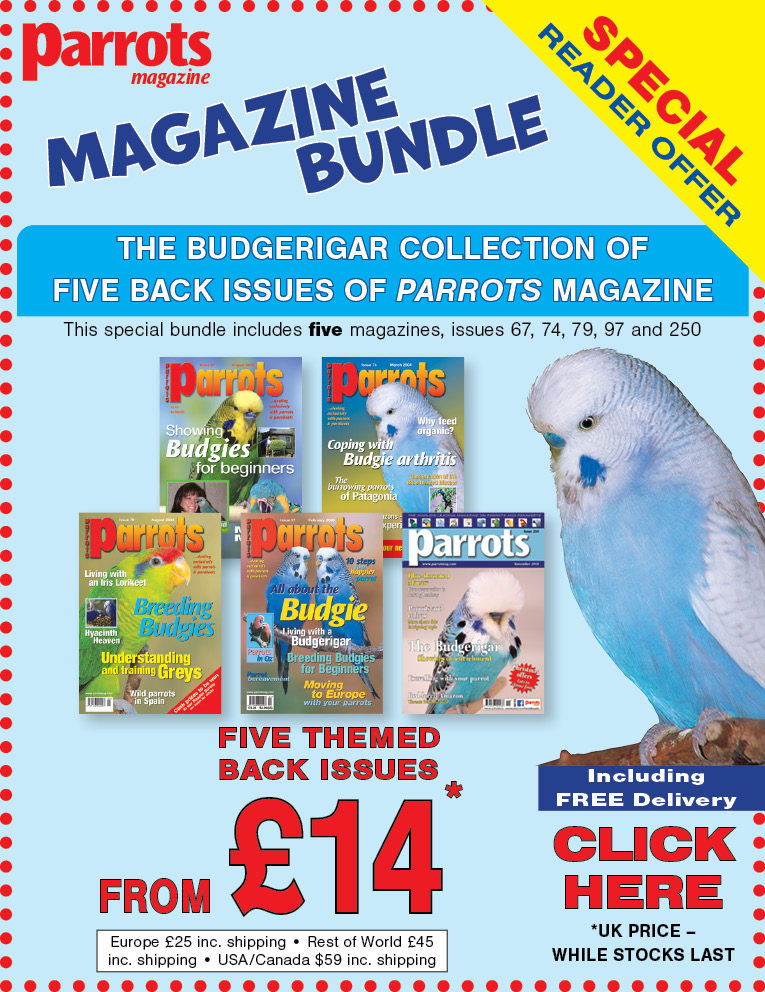
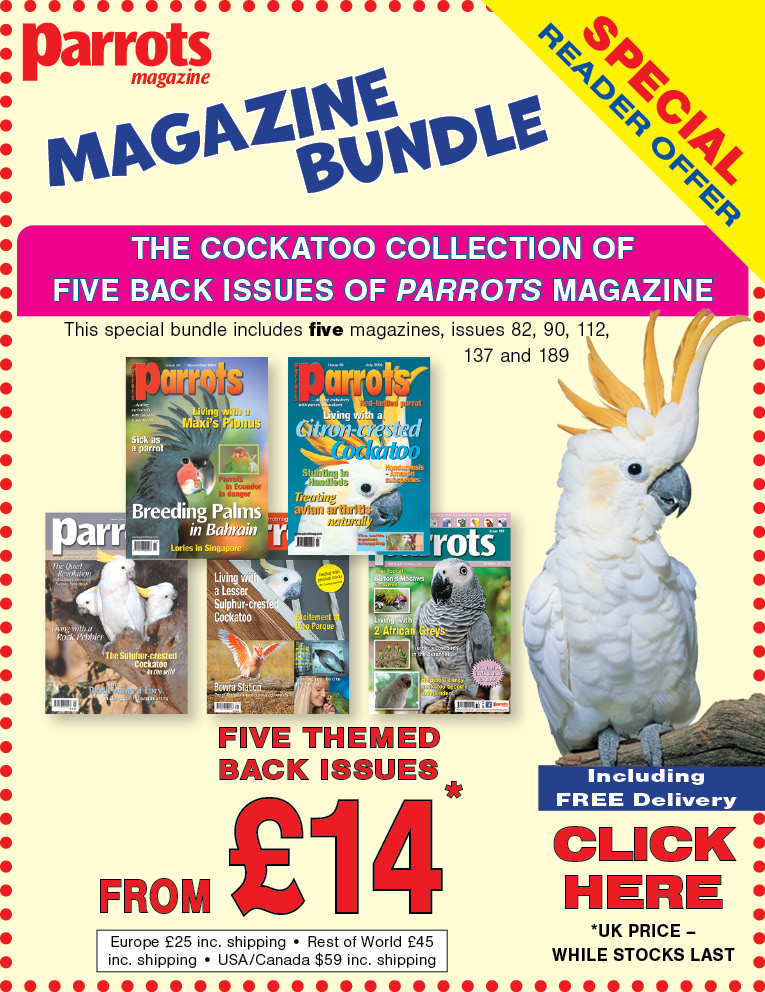
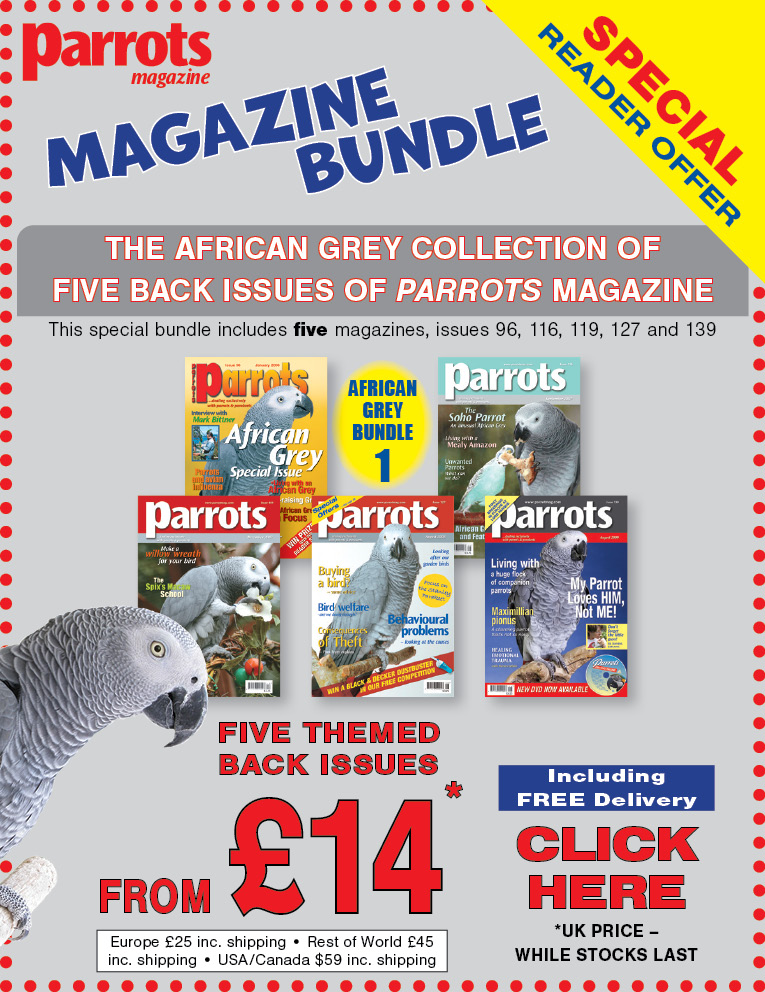

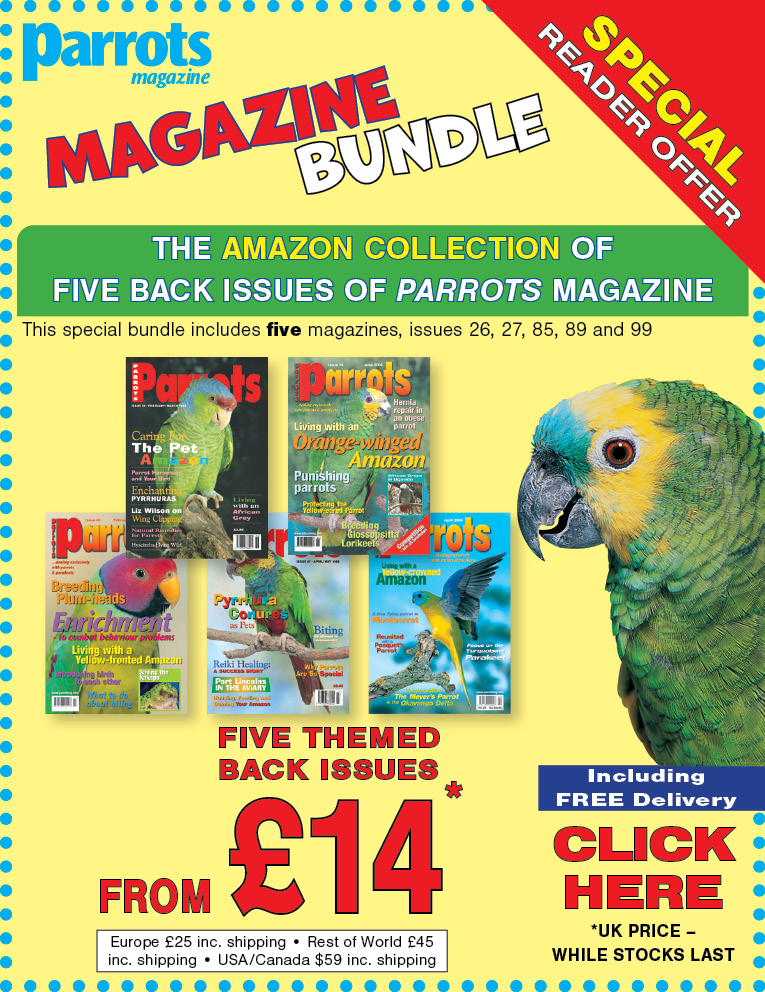

Parrot Chat
Buyers Guides
Breeding articles